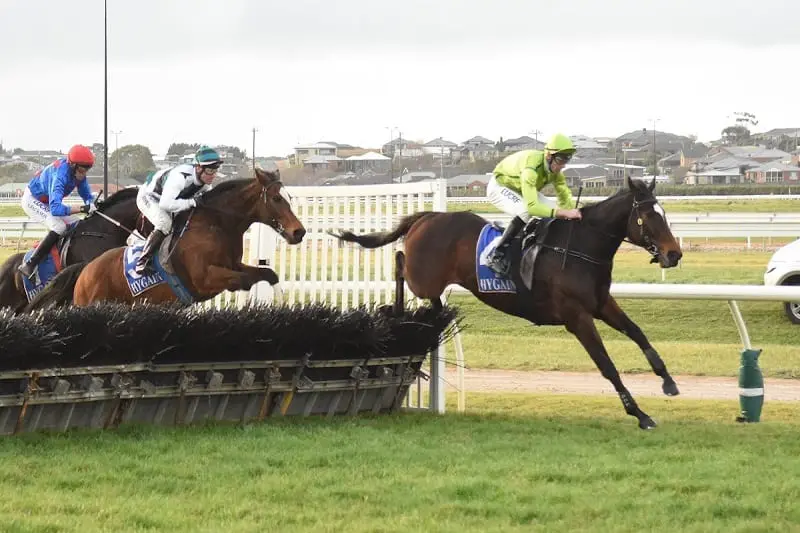UK study on equine vision could reshape jumps racing

A REVAMP in jumps racing in the UK could be on the horizon after a University of Exter study conducted on the way horses perceive colour delivered encouraging results.
In 2017 the British Horseracing Authority (BHA) and Racing Foundation provided funding support for research into equine vision, specifically relating to hurdles and jumps.
The opportunity for this project was identified by the partnership between the BHA and RSPCA, who work together on an ongoing basis to develop new ways to make hurdle and fence design safer.
The aim of the study was to assist in improving obstacle visibility for horses, which would in turn reduce the risk of falls and injuries for horses and jockeys.
Presently, the colour used on hurdle frames and fence take-off boards and guard-rails is orange, based on human vision. Horses have reduced colour vision compared to humans and only differentiate objects in a palette of blues and yellows.
The research conducted indicates that other colours should be more effective in offering visibility to horses. As a result, a recommendation has been approved by the sport’s Racecourse Committee that a phased trial should be carried out using fluorescent yellow for all hurdles and guard-rails, and fluorescent white for take-off boards at fences.
These colours have been determined to maximise visibility under a wide range of conditions for both humans and horses.
The next phase of testing will see a more extensive trial take place at training grounds in order to build up more information before conducting tests in a live racing environment.
READ: LATEST HORSE RACING NEWS FROM AUSTRALIA
David Sykes, Director of Equine Health and Welfare for the BHA, stressed the importance of making jumps racing as safe as it can be.
“This fine and important project is an example of how British racing uses advanced scientific and veterinary research to constantly improve racehorse welfare, not only for thoroughbreds in Britain but across other nations and equine disciplines.
“As with the ongoing phased introduction of our padded hurdles – which have proven to reduce faller and injury rates – we will ensure to take our time with this project, make sure there are no unintended consequences and that the evidence of the ongoing trials continue to support the case for change.
“If that proves to be the case then we will look forward to seeing the new designs of hurdles and fences on racecourses, and hopefully further reducing our already declining faller rate.”
The investment in ensuring jumps racing is as safe as possible has been a sound one from a welfare perspective.
The faller rate in British racing has reduced by 29% since 2004 as a result of ongoing investment in racecourse safety, and constant enhancements in racehorse care and training standards.
Professor Stevens, Chair in Sensory and Evolutionary Ecology for the University of Exeter, said the role of technology in horse racing is an ever-growing alley in injury prevention to both horses and humans.
“Understanding how animals see the world, and using cutting-edge tools to investigate this, has a valuable role to play in guiding the safety and welfare of animals and humans in a variety of contexts.
“This project demonstrates how modern science can look to have widespread positive implications in human society and our interactions with animals.”
More News
-

NFL Week 5 betting tips, predictions & multi picks
-

UCL soccer betting preview & best bets | October 2, 2025
-

New Zealand v Australia cricket tips & best odds | First T20
-

Champions League Matchday 2 tips & predictions | October 1
-

UFC Perth betting preview, tips & full card analysis | Sept 28
-

AFL Grand Final 2025 betting tips & odds | Geelong v Brisbane
-

NRL Finals Week 3 betting tips, multi picks & predictions
-

NFL Week 4 betting tips, predictions & multi picks






